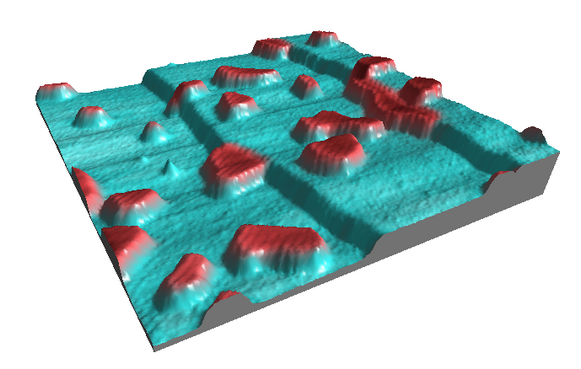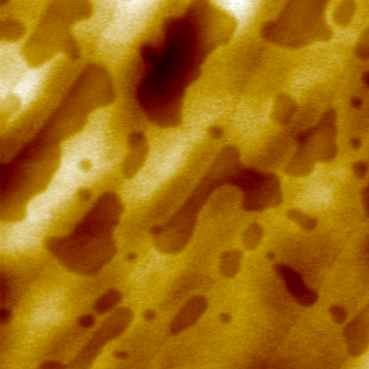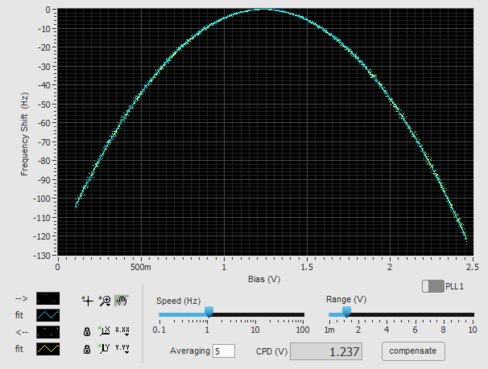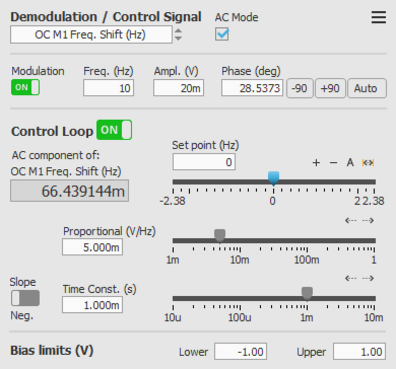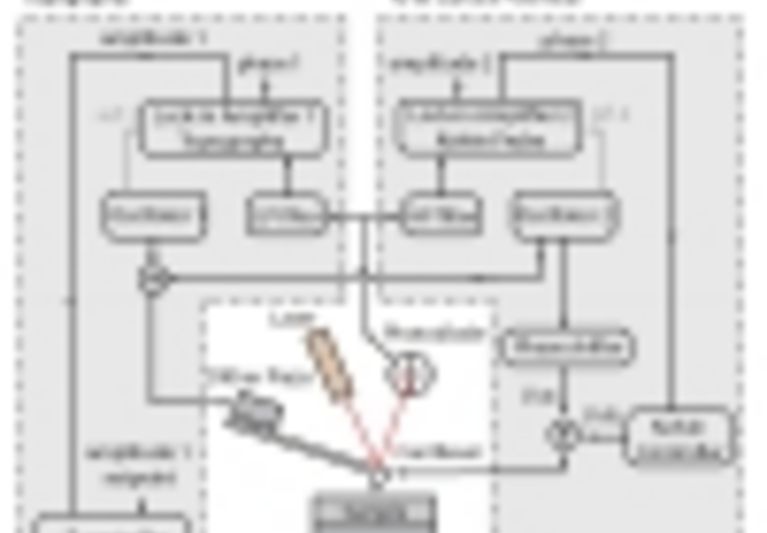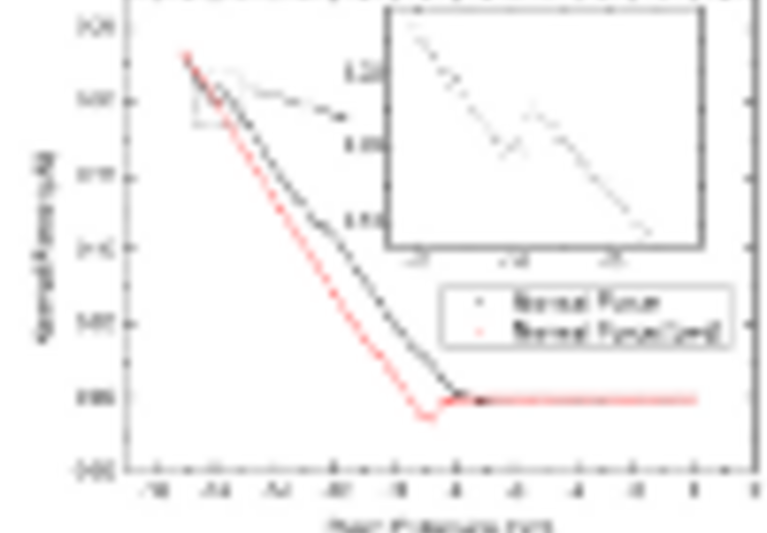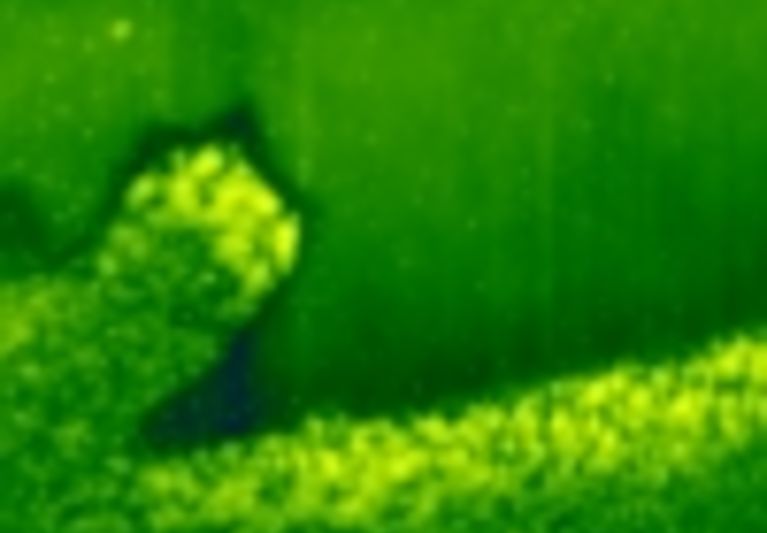Kelvin controller
Bias voltage regulation for contact potential measurements with Kelvin controller KC 5 add-on
The Kelvin probe module is an add-on module to either the OC4.5-Station or the full Nanonis control system (with OC4) and is intended for the mapping of surface charge distribution or contact potential difference (CPD) between tip and sample. Its fully digital implementation allows for maximum flexibility and does not require any additional wiring. Any channel can for instance be selected as input signal for either amplitude or frequency shift modulation modes. An internal lock-in demodulates the input signal and a PI-loop regulates the bias voltage to compensate for the change in contact potential. The modulating AC-component of the bias voltage, defined by the user, is internally added to the regulated DC bias voltage.
Generally, a change in the bias voltage results in a change of the force gradient between the tip and the sample due to electrostatic interactions (measured through the frequency shift in ncAFM). In a very good approximation this change is parabolic. The bias voltage at the maximum of the parabola, i.e. the point at which a change in bias does not influence the frequency shift, lies at the relative work function between tip and sample material. To measure this work function (also known as contact potential) is the scope of Kelvin probe microscopy. In a Kelvin probe experiment the bias voltage applied between tip and sample is modulated at afrequency that is higher than the cut-off frequency of the z-feedback controller, i.e. an AC-component of a few kHz is added to the DC-offset of the bias. The response of the modulation on the frequencyshift is measured with a built-in fully digital lock-in detector. A separate PI-controller regulates the DC-offset such that the response of the frequency shift is zero, i.e. it is at the maximum of the parabola. Now the DC-offset is a direct measure of the work function/contact potential.
FM-Mode:
In the FM mode the bias is modulated at a frequency that is higher than the bandwidth of the z-feedback, but not commensurate with the oscillatory motion of the cantilever. This mode is directly supported by the Nanonis Kelvin probe module.
AM-Mode:
In the AM mode the bias is modulated at a frequency that is commensurate with the oscillatory motion of the cantilever, usually at a higher resonance of the cantilever. This mode is supported by the Nanonis Kelvin probe module but requires an dual-OC4 or an additional external lock-in detector capable of operating at the desired frequencies.
The Kelvin controller module is tightly integrated with the control system, especially the scan control, spectroscopy and z-feedback module. The KPFM data can therefore be acquired, displayed and analysed in exactly the same way as all other data channels.
